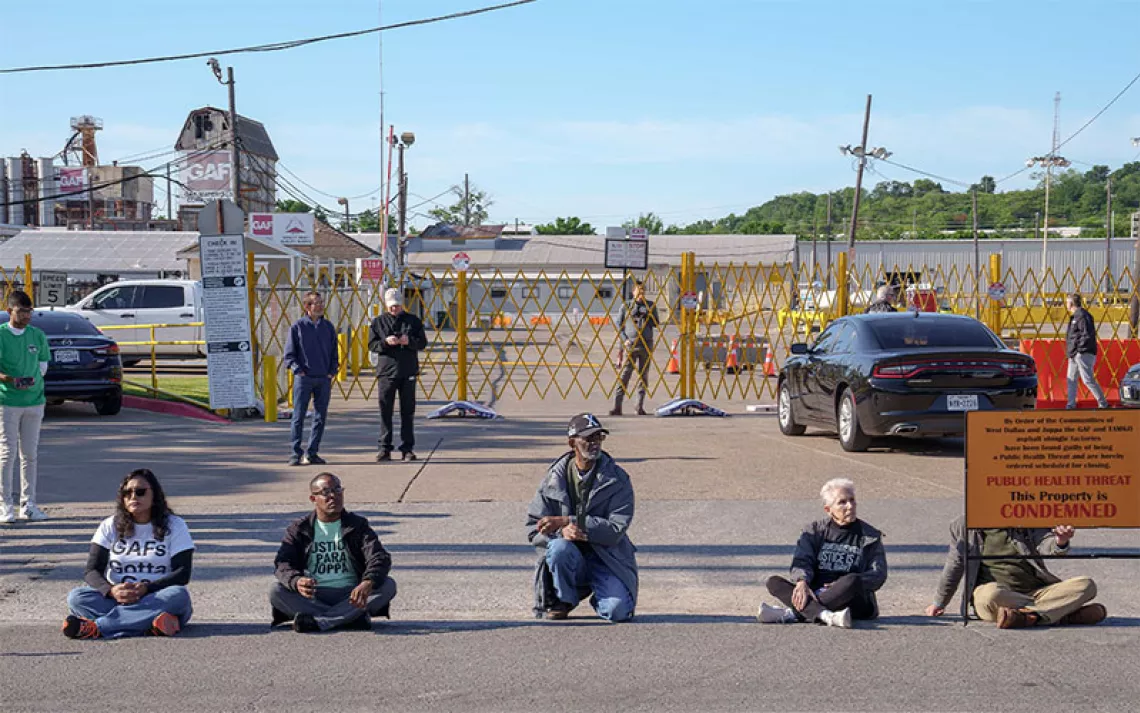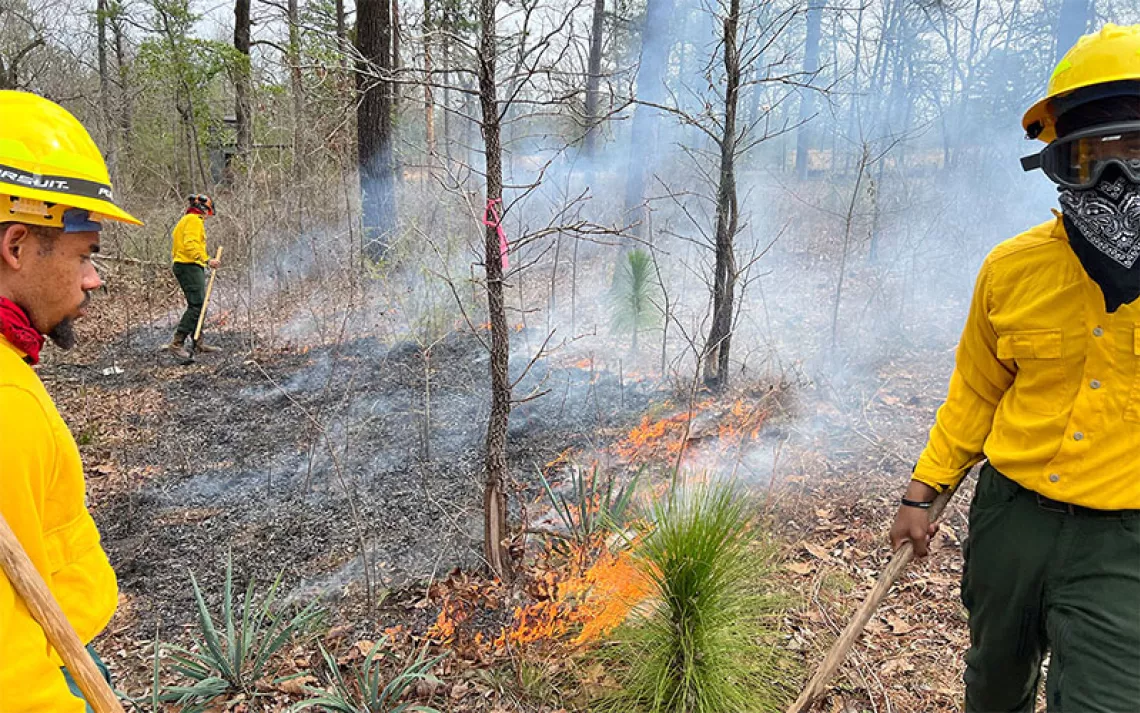Don’t Call It “Eco-Fascism.” It’s Just Plain Hate.
There is no ideology, and there are no manifestos either

JoAnn Daniels, left, speaks about her sister Celestine Chaney, who was killed in the shooting at a supermarket in Buffalo, New York. | Photo by Matt Rourke/AP Photo
The opinions expressed here are solely those of the writer and do not necessarily reflect the official position of the Sierra Club.
I’ve been trying to stay away from all the bad news these days, so I was late to learn the details about the recent terrorist attack in Buffalo, New York.
I was in the midst of a solo road trip, traveling east from Tucson to El Paso. As I approached my destination off I-10, I began to notice that all the American flags were at half-staff. I stopped at a Ford dealership to ask them why their especially large flag had been lowered. “Because 1 million Americans have died during the pandemic,” one of the salesmen said. A few blocks later, I stopped for gas. There, a young man at the register told me he didn’t know why their flag was flying at half-staff. We bantered on about how America seems to have no shortage of tragedies these days. “Maybe it’s down for the killings in Buffalo, New York?” Because, he said, “they remind us of what happened here in 2019.”
On August 3 of that year, El Paso became the site of the deadliest attack on Latinos in modern US history. Minutes before he opened fire and killed 22 people at a Walmart store, the 21-year-old terrorist posted a document online that he referred to as a manifesto. It was a rambling, incoherent list of white nationalist and anti-immigrant talking points, the shooter’s “response to the Hispanic invasion of Texas.” In the document, he proposed a future where the United States is separated into different territories for different races and ethnicities.
In the headlines that followed the attack, the term “eco-fascist” was used to define this ignorant, hateful young criminal. But it is a misnomer. The word “environment” appears a scant four times in the 2,500-word text. He couldn’t make a single solid argument linking immigration to the US with environmental destruction.
The same is true of the Buffalo terrorist and his alleged motives. The Guardian reports that the shooter’s 180-page statement of intentions “includes theories on the environment that are similar to screeds espoused by other recent mass murderers.” What’s more, parts of the text itself were plagiarized. Yet, once again, the killer’s actual “ideas” (if you can call them that) are thin and rambling when it comes to actually making an argument about environmental concerns. As Graeme Wood points out in an analysis for The Atlantic, the shooter’s screed demonstrates an “inability to think about history, science, race, or humanity in sophisticated and adult ways. It is pathetic, stupid, and witless.”
I’ve also been guilty of mischaracterizing these killers as motivated by “eco-fascism.” We journalists often have to draw analyses on quick deadlines, sometimes sacrificing key details to make room for the bigger takeaways. But words matter immensely. They shape public opinion. And when it comes to the rise in domestic terrorism in America, such as we’re experiencing today, it’s critical to understand the real motivations for these kinds of attacks.
“Eco-fascism is an incredibly dense and complicated term,” says Aaron Flanagan, team lead for the Intelligence Project at the Southern Poverty Law Center. “I encourage people not to employ it because it’s become kind of a popular buzzword for talking about these kinds of attacks.” Instead, Flanagan asks that we look at the historical legacy of white supremacy and nativism. “Attaching ‘eco’ to it makes it harder to penetrate that history.” The shorthand of “eco-fascism” may obscure more than it reveals.
Flanagan’s research focuses on white power movements across several ideologies, including neo-Nazi, Ku Klux Klan, and Holocaust denial theories, which in turn are rooted in 17th-century European theories about the superiority of whites over non-whites. Various kinds of pseudoscience or racist applications of genuine scientific research were used to justify slavery in the United States in the 18th and 19th centuries, eugenics policies in the 20th century, and US laws to curb immigration—especially immigration from Asia. In his book The Mismeasure of Man, the late paleontologist and evolutionary biologist Stephen Jay Gould revealed how intelligence testing influenced the passage of the Chinese Exclusion Act, which set quotas for Asian immigrants to the United States and authorized the formation of the Border Patrol in 1924.
It’s difficult to see how racist terrorists like the man who staged the attack at the El Paso Walmart in 2019 or the 18-year-old who killed 10 people at the Tops supermarket in east Buffalo exhibit any political or social ideologies. For that matter, their writings shouldn’t be identified as “manifestos” either: They are dangerous rants without a clear motive or intention other than to spread hate (and inspire future terrorist attacks). Both the El Paso and Buffalo terrorists cited the Christchurch mosque shootings in New Zealand in March 2019 and the far-right conspiracy known as replacement theory as inspirations for their attacks. So-called replacement theory—which claims that Jewish people are behind a conspiracy to demographically replace white Europeans with non-whites, and in particular, Muslims—has been circulated widely by white nationalists on social media, on television, and even by a top official from Border Patrol. In adopting and adapting this racist conspiracy theory for a US context, the El Paso and Buffalo terrorists chose to target Latino and Black populations.
So if there is no real concern for the environment, no ideology, no manifesto, then what do we call this trend? It helps to frame it as an opportunistic, racist, desperate attempt to gain followers and appeal to Americans’ fears of a foreign invasion, of “the other.”
“The hard right wants to either stay anonymous or they want to dictate the narrative,” says Rachel Carroll Rivas, a senior research analyst also at the Southern Poverty Law Center. The spread of nativist terrorism relies on obfuscation. We must demystify the actions of these terrorists and find the right words to define their actions, she argues. “Exposure really matters, but it also takes the fear out of it.”
Stripping from these terrorists some of the terms we’ve been using makes it easier to unmask their motivations. Whether they’re targeting Black supermarket shoppers or Latino border residents, their aim is plain: to spread misinformation, hate, violence, and murder. There is nothing “eco” about crimes that are simply, and tragically, racism and ignorance turned lethal.
 The Magazine of The Sierra Club
The Magazine of The Sierra Club



